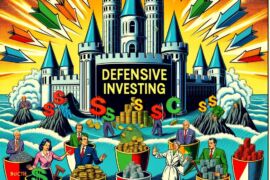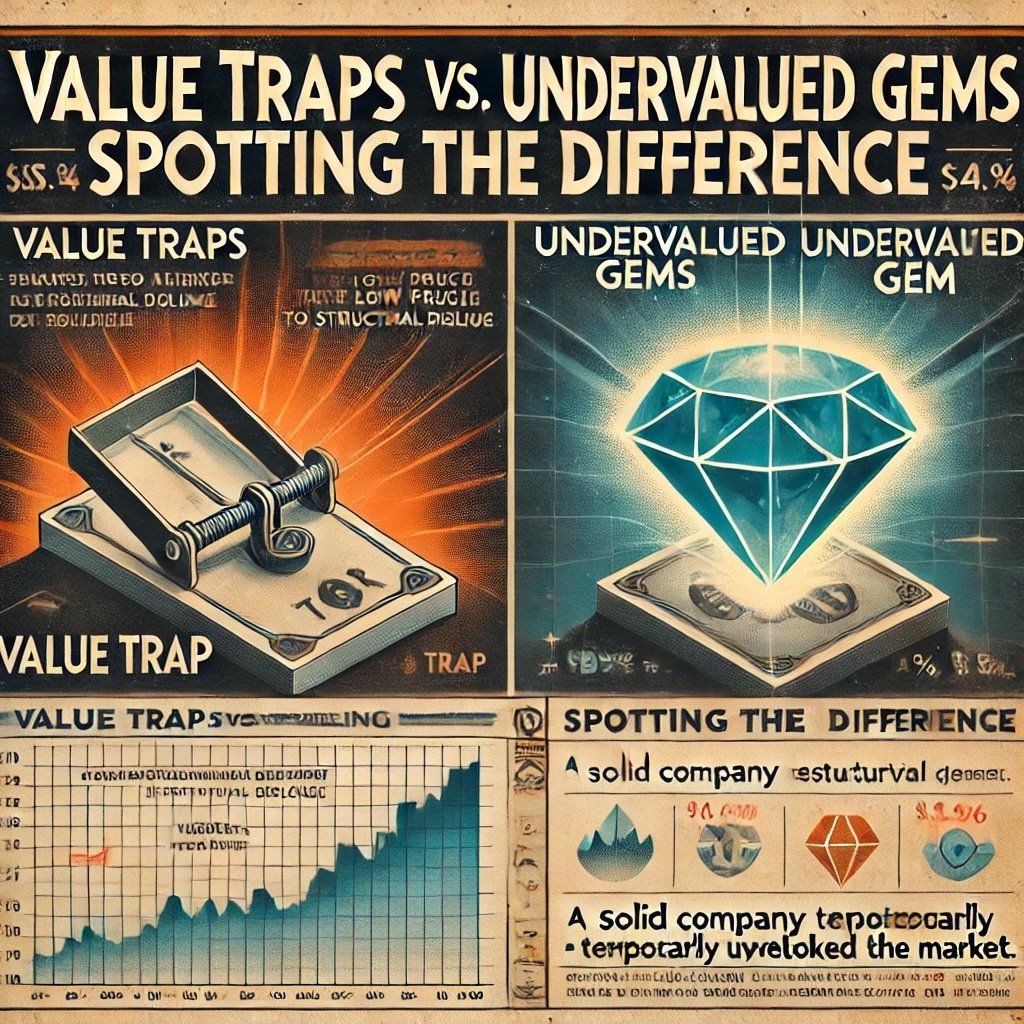In the dynamic, ever-evolving landscape of investing, we are continually confronted with the paradox of constancy and change—constancy in the inherent uncertainty of financial markets, and change as the only predictable element. As astute investors, the challenge lies not only in surviving these unpredictable waves of change, but in harnessing their power to enhance our portfolio’s performance. Today, we delve into a strategy that aims to do precisely this—the powerful yet often misunderstood concept of “anti-fragility” in investing.

Concept of “Anti-Fragility” in Investing
Pioneered by risk analyst and author Nassim Nicholas Taleb, the term “anti-fragility” paints a fascinating new approach to risk and uncertainty. Taleb’s conceptual framework takes us a step beyond the known territories of resilience and robustness, which are typically associated with resistance to shocks or an ability to return to an original state after a disruption.
In contrast, an “anti-fragile” system does more than merely absorb shocks—it thrives on them. Imagine, for instance, the mythological creature Hydra, which would grow two new heads every time one was cut off. Or consider the Phoenix, reborn stronger and brighter from its own ashes. In the realm of investing, an anti-fragile portfolio is similarly designed to harness the potential of market volatility, using it as a catalyst for improvement and growth.
As we journey through the financial landscape, volatility is our constant companion. Economic downturns, industry disruptions, market fluctuations—these aren’t anomalies but integral elements of our investment journey. The question is not whether these events will occur, but when they will strike, and how well-equipped we are to navigate them.
Importance of Creating an Anti-Fragile Portfolio
This is where the power of an anti-fragile portfolio comes to the fore. By constructing a portfolio that not only endures the storms of change but actually leverages them for growth, we can transform potential threats into opportunities. It’s akin to a judo move in the financial world, using the force of the market’s volatility to enhance portfolio performance.
In this comprehensive exploration, we’ll probe into the heart of anti-fragility, discussing its core components and dissecting the strategies necessary to build an anti-fragile portfolio. We’ll delve into the pivotal role of financial advisors in this endeavor and reflect on how their knowledge and adaptability can guide you towards a more robust investment approach.
We will also investigate real-life examples of anti-fragility in action, extracting valuable insights from these success stories. Lastly, we’ll cast our gaze towards the future, hypothesizing on how the concept of anti-fragile investing could evolve in an increasingly uncertain world.
Our goal is to equip you with the knowledge, insights, and confidence to embrace this powerful approach. Are you ready to embark on this fascinating journey? Let’s unravel the intricacies of an investment strategy designed to thrive in uncertainty, and harness the very volatility of financial markets for growth and success.

Understanding Anti-Fragility
Origins of the Term “Anti-Fragile”
The voyage into the heart of anti-fragility begins with understanding its origins. This thought-provoking term was coined by Nassim Nicholas Taleb in his critically acclaimed book, “Antifragile: Things That Gain From Disorder.” Taleb, a scholar, mathematical statistician, and former trader, is well-versed in the unpredictable patterns of financial markets. He introduced the concept of anti-fragility as a means of understanding and leveraging the inherent chaos and volatility in various systems, from nature to economics.
In Taleb’s conceptualization, anti-fragility goes beyond merely withstanding shocks—it implies benefiting from them. An anti-fragile system, whether biological, economic, or financial, learns, adapts, and grows stronger in response to stressors, shocks, and volatility. Like muscles that tear during a strenuous workout only to regenerate stronger, or forest ecosystems that flourish after a wildfire, anti-fragile systems improve when tested, and they do so in ways that are often unpredictable and non-linear.
Contrast Between Resilience and Anti-Fragility
To grasp the power of anti-fragility, it’s helpful to contrast it with more commonly understood concepts—specifically, resilience. Resilience is a term often bandied about in investing circles, symbolizing the ability of a portfolio to withstand shocks and recover to its previous state. It’s akin to a rubber ball bouncing back to its original shape after being compressed or stretched.
Anti-fragility, however, represents a leap beyond resilience. A resilient portfolio can endure market downturns and bounce back over time, but an anti-fragile portfolio actually benefits from these downturns. This might seem counterintuitive, but when you think about the numerous opportunities that market volatility presents, such as buying undervalued assets or rebalancing for long-term gains, the idea becomes more tangible. Anti-fragility, in essence, is about transforming vulnerability into strength.
Anti-Fragility in Portfolio Management
Embracing the concept of anti-fragility can be a game-changer for portfolio management. It shifts the focus from merely surviving economic downturns to seizing these moments as unique opportunities for growth and advancement. It instills a new perspective on risk—not as a peril to be avoided, but as a potential catalyst for enhancement.
When managing a portfolio, anti-fragility encourages strategic moves like diversifying across different asset classes, sectors, and regions, as well as rebalancing based on market conditions and individual risk tolerance. It propels investors to stay vigilant and adaptive, poised to take advantage of market anomalies and fluctuations.
Adopting an anti-fragile approach could mean going against the crowd—buying when others are selling out of fear, or finding potential in sectors that others are quick to dismiss. It’s not about predicting the future with certainty (an often futile endeavor) but about preparing for a range of possible futures, ready to reap benefits from whatever comes our way. In the uncertain seas of investing, this could be the lighthouse guiding us towards sustained long-term success.
source: The Swedish Investor on YouTube

Components of an Anti-Fragile Portfolio
Diversity of Assets
Step into the garden of investing, and you will be struck by the beautiful variety of assets that can form part of your portfolio. It’s not just about stocks and bonds; there’s a plethora of other investment opportunities, from real estate and commodities to ETFs and foreign currencies. To build an anti-fragile portfolio, one needs to sow the seeds of this diversity into their financial soil.
A well-diversified portfolio, encompassing multiple asset classes, sectors, and geographical regions, forms the backbone of anti-fragility. It’s like a lush, vibrant ecosystem, where different species—each with its unique strengths and weaknesses—coexist, balancing each other out. In a financial context, the strengths of one asset may offset the weaknesses of another, helping the portfolio remain stable or even thrive amid market volatility.
For instance, if stocks tumble during a recession, bonds often gain—this natural hedge can help buffer your portfolio against severe losses. Similarly, an investment in international markets can counteract domestic economic slowdowns. Diversification, in essence, doesn’t put all your eggs in one basket, and this fundamental principle rings especially true for building an anti-fragile portfolio.
Flexibility and Adaptability
Anti-fragility isn’t about creating a fixed, rigid structure—it’s about cultivating a portfolio that bends and sways with the financial winds, always ready to adapt to changing scenarios. Just as a supple tree survives a storm by bending with the wind, an adaptable portfolio can navigate market turbulence, adjusting its stance based on prevailing conditions.
This flexibility manifests in various ways—from shifting allocations between different asset classes based on market trends, to reallocating investments in response to significant life events or changes in financial goals. It could mean rebalancing your portfolio to maintain its original risk-return profile or altering your investment strategy based on changing market dynamics.
An investor embracing anti-fragility remains open-minded, continually learning and unlearning, adapting their strategy as they glean new insights from market movements. They’re not reactive but proactive, poised to seize opportunities as they emerge.
Investments that Gain from Disorder or Volatility
At the heart of an anti-fragile portfolio lie investments that don’t merely survive disorder but thrive on it. In a market defined by change and unpredictability, such investments serve as powerful anchors, turning the tide of volatility in their favor.
Consider, for example, investments in certain sectors that typically gain during market downturns, like consumer staples or healthcare. Or think about assets like gold, often seen as a “safe haven” during turbulent times. Another strategy could involve investing in inverse ETFs, which are designed to perform well when the market index they track is falling.
Options trading is another domain where volatility can be used to advantage, particularly strategies that benefit from large price swings regardless of the direction.
Remember, though, that these strategies often involve higher risk and require a good understanding of market dynamics. Therefore, they should be employed judiciously, balancing potential rewards with the risk tolerance and financial goals of the individual investor.
Aan anti-fragile portfolio—diverse, flexible, and primed to capitalize on volatility—represents a powerful strategy for investors seeking to thrive amidst the inherent uncertainties of financial markets. It’s about swimming with the current of change, leveraging its power to propel your portfolio forward.
source: Michelle Marki Investing on YouTube

How to Build an Anti-Fragile Portfolio
Strategies for Diversification
The path to creating an anti-fragile portfolio is akin to weaving a rich tapestry of investments, where each thread strengthens the overall structure. This journey begins with diversification—a deliberate, strategic spread across different asset classes, sectors, and regions.
It’s about venturing beyond the comfort zone of familiar stocks or bonds, exploring the wider landscape of investment options—from real estate and commodities to foreign assets and alternative investments. It could involve investing in sector-specific ETFs or mutual funds to tap into diverse industries without buying individual stocks.
But diversification isn’t about merely adding a multitude of assets. It’s about understanding how these assets interact with each other, their correlations, and how they respond under different market conditions. A truly diversified portfolio seeks investments that perform differently under varying circumstances, creating a robust safety net when certain sectors or asset classes underperform.
Importance of Continual Learning and Adaptability
Building an anti-fragile portfolio is not a one-off task; it’s an ongoing process of learning, evolving, and adapting. This approach fosters adaptability—a key ingredient of anti-fragility.
Staying informed about market trends, new investment products, and macroeconomic indicators is crucial. This knowledge empowers investors to adjust their portfolio strategy to capitalize on emerging opportunities or mitigate risks. It’s about cultivating a growth mindset, learning from past experiences, and applying those lessons to future decisions.
Also, it’s essential to adapt to personal changes—life events like marriage, parenthood, or retirement can significantly alter one’s financial goals and risk tolerance. An anti-fragile portfolio adapts to these changes, evolving alongside the investor’s life journey.
Implementing Volatility-Harnessing Assets
In the garden of anti-fragility, certain assets bloom in the face of market volatility. Harnessing these investments can reinforce your portfolio’s ability to gain from disorder.
These assets might include sector-specific funds that tend to outperform during downturns, like healthcare or consumer staples. It could also involve inverse ETFs or other derivative products designed to profit from market declines.
Adding a sprinkle of alternative investments—such as real estate, commodities, or private equity—can also provide a buffer against stock market volatility. And let’s not forget the potential role of safe-haven assets like gold or treasury bonds, which often shine in turbulent times.
However, remember to tread carefully. While these assets can boost your portfolio’s anti-fragility, they come with their own risks and complexities. So, ensure they align with your risk tolerance and financial goals before integrating them into your portfolio.
source: Tracey Edwards on YouTube
Regular Review and Rebalancing
An anti-fragile portfolio is not a ‘set and forget’ construct; it requires regular check-ups and occasional fine-tuning. Like a gardener pruning and nurturing their plants, investors must regularly review and rebalance their portfolio to maintain its health and vigor.
Regular portfolio reviews help keep track of performance, assess alignment with financial goals, and identify any adjustments needed. Rebalancing, on the other hand, is about realigning your portfolio back to its original asset allocation, ensuring it doesn’t stray too far due to certain investments performing better than others.
Periodic rebalancing can also create opportunities to ‘buy low and sell high.’ For instance, if bonds have outperformed stocks in a particular period, rebalancing would involve selling some bonds (selling high) and buying more stocks (buying low), thereby potentially enhancing returns and maintaining the desired level of risk.
In a nutshell, building an anti-fragile portfolio is an active, ongoing process—a dynamic dance with the rhythm of the markets. With diversification, adaptability, volatility-harnessing assets, and regular review and rebalancing as its choreography, this dance can be a rewarding journey towards financial resilience and growth.

The Role of Financial Advisors in Building Anti-Fragile Portfolios
How Financial Advisors Can Help in Building an Anti-Fragile Portfolio
Imagine embarking on a mountain climbing adventure. Would you go alone or hire a skilled guide who knows the terrain? Much like a seasoned guide, a financial advisor can be an invaluable asset on your investing journey, especially when creating an anti-fragile portfolio.
First and foremost, financial advisors bring their deep expertise and wide-ranging market knowledge to the table. They have the ability to decode complex market trends, understand the implications of economic indicators, and offer strategic advice accordingly. They can help identify potential investment opportunities, assess risks, and suggest appropriate asset allocations.
Building an anti-fragile portfolio involves intricate decisions about diversification, asset correlations, and risk management—all areas where a financial advisor’s expertise can be invaluable. They can guide you in selecting a diverse mix of assets, balancing growth potential with risk, and ensuring the portfolio aligns with your financial goals and risk tolerance.
Importance of Choosing a Knowledgeable and Adaptable Advisor
Just as a portfolio needs to be anti-fragile, the financial advisor guiding its creation should also embody adaptability. Markets are not static—they twist, turn, and sometimes even somersault. A good financial advisor is not only well-versed in these acrobatics but is also equipped to pivot strategies when needed.
An advisor who keeps up with industry trends, regulatory changes, and new investment products can provide timely and relevant advice. This adaptability can help you capitalize on emerging opportunities and navigate challenges effectively.
Also, an advisor’s understanding of your personal circumstances and financial goals is paramount. As these evolve, the advisor should be able to adjust your investment strategy accordingly, keeping your portfolio aligned with your changing needs.
The Benefits of Professional Advice in Portfolio Construction
Working with a financial advisor can offer several benefits. An anti-fragile portfolio is a complex construct that requires an in-depth understanding of financial markets and investment products. For those unfamiliar with these intricacies, a financial advisor can demystify the process and guide them towards sound investment decisions.
An advisor can offer a fresh, objective perspective on your financial situation, helping avoid emotional investment decisions—a common pitfall among investors. They can provide disciplined, strategic advice, helping you stay the course during market turbulence.
Additionally, a financial advisor can save you time—time you can use to pursue your passions, spend with your loved ones, or just unwind. While you engage with life’s joys and challenges, your advisor can keep a watchful eye on your portfolio, ensuring it remains robust and anti-fragile.
To sum up, while creating an anti-fragile portfolio can seem like a daunting task, having a knowledgeable and adaptable financial advisor by your side can turn this challenge into a rewarding journey towards financial resilience and growth. It’s like having a skilled dance partner guiding you gracefully through the complex choreography of the financial markets.
source: Rocket Dollar on YouTube

Case Study: Anti-Fragile Portfolios in Action
Real-World Examples of Anti-Fragile Portfolios Thriving in Uncertainty
To truly grasp the power of an anti-fragile portfolio, let’s dive into the heart of the financial tempest—the 2008 global financial crisis. Here, we’ll examine the case of an imaginary, yet plausible, investor: meet Jane, a discerning aficionado of anti-fragility.
As the financial markets crumbled in 2008, Jane’s portfolio remained not just resilient, but anti-fragile. While heavily invested in the stock market, she had also diversified into a healthy mix of bonds, commodities, real estate, and even a sprinkle of inverse ETFs designed to profit from market declines. This wide-ranging diversification provided a robust safety net as stocks plummeted.
But it wasn’t just diversification that saved the day. Jane, an adaptive investor, had been keeping a close eye on the emerging housing bubble. Seeing the impending storm, she shifted her strategy, reducing her exposure to vulnerable sectors and increasing her stake in defensive ones like healthcare and consumer staples.
Moreover, Jane’s portfolio thrived on volatility. The inverse ETFs in her portfolio flourished as the markets tanked, offsetting some of the losses from her equity investments. And when the dust settled and the markets began to rebound, Jane was quick to rebalance her portfolio, buying low-priced stocks and seizing the recovery wave.
Lessons Learned from These Examples
Jane’s story offers valuable lessons in anti-fragile investing. First, it underscores the importance of diversification—not just across different asset classes, but also sectors, regions, and investment styles. A diverse portfolio can absorb shocks better, and provide opportunities for growth even in turbulent times.
Second, Jane’s tale highlights the significance of adaptability in investing. Keeping a pulse on market trends and economic indicators, and having the willingness to adjust your strategy in response, is crucial in navigating volatile markets.
Third, Jane’s example shines a light on the power of harnessing volatility. Assets that can profit from market turbulence can add a layer of anti-fragility to your portfolio, potentially cushioning it from downturns.
Finally, the story of Jane serves as a reminder of the importance of regular portfolio review and rebalancing. As market conditions change, so too should your portfolio. Rebalancing not only maintains your desired asset allocation but can also create opportunities to enhance returns.
In essence, Jane’s anti-fragile portfolio, thriving amidst the chaos of 2008, serves as a testament to the power of diversification, adaptability, harnessing volatility, and regular rebalancing. It’s a compelling example of how, with the right strategies and mindset, one can turn market uncertainty into a dance of profitable opportunities.
source: Couch Investor on YouTube

The Future of Anti-Fragile Investing
As we chart our course into the future, one thing seems certain: change will be our constant companion. And with change often comes volatility. In this dynamic environment, the concept of anti-fragile investing is likely to gain even more traction.
Predictions for How Anti-Fragile Investing Will Evolve in the Future
Investment methodologies will likely continue to evolve, with greater emphasis on flexibility, adaptability, and learning from disorder. Algorithmic trading and AI-driven investment strategies, which can rapidly adapt to changing market conditions, might play a more prominent role. These tools can learn from market turbulence and adapt investment strategies in real-time, lending an anti-fragile quality to portfolios.
Furthermore, as investors increasingly realize the limits of traditional diversification, we might see a greater exploration of diverse asset classes and alternative investments. This includes everything from cryptocurrencies and peer-to-peer lending platforms, to commodities and real estate investment trusts (REITs), or even art and collectibles. These diverse avenues can offer unique advantages in different market conditions, contributing to the anti-fragility of a portfolio.
Importance of Anti-Fragility in a Volatile World
In a world that seems to shift beneath our feet, the principles of anti-fragile investing remain more relevant than ever. With an anti-fragile portfolio, investors can not only withstand shocks but potentially profit from them.
The increasing prevalence of black swan events—unpredictable occurrences with massive implications—makes anti-fragility even more critical. These events can disrupt markets and economies, but an anti-fragile portfolio can dance with this disorder, finding opportunities amid the chaos.
The future of investing is more than just surviving market volatility—it’s about thriving amidst it. By embracing anti-fragility, investors can transform volatility from a formidable foe into a valuable ally, turning the unexpected into the profitable.
In conclusion, anti-fragility is more than just a strategy; it’s a mindset, a philosophy of embracing uncertainty and harnessing it to one’s advantage. As we venture into the uncharted waters of the future, an anti-fragile portfolio might just be the sturdy vessel we need to navigate the swirling seas of market volatility and chart a course towards financial growth and prosperity.
source: Deep Value Co on YouTube

Conclusion: Building an Anti-Fragile Portfolio
Navigating through the complexities of our journey, we have discovered a profound truth – volatility and uncertainty, often viewed as the villains of the investment story, can indeed be transformed into heroes. This metamorphosis hinges on the fascinating concept of anti-fragility.
We explored how anti-fragility, far from being mere resilience or robustness, embraces change and disorder, flourishing amidst uncertainty. We unveiled the vital components that build an anti-fragile portfolio: diversity of assets, flexibility, and a penchant for volatility-embracing investments.
Strategies for building this robust portfolio ranged from the artful act of diversification to the strategic inclusion of volatile assets and the all-important ritual of regular review and rebalancing. The supportive role of financial advisors in this process was also illuminated, showcasing the worth of expert guidance in traversing the rocky terrains of the financial landscape.
Through the lens of our case study, we saw the potential of an anti-fragile portfolio to not just survive, but thrive amidst market turmoil, turning potential catastrophe into a cornucopia of opportunities.

Encouragement for Investors to Explore Anti-Fragility
As our voyage draws to a close, it’s clear that the voyage of anti-fragility is just beginning. In a world that’s perpetually in flux, the ability to adapt, evolve, and profit from change is a potent tool for investors. The future beckons with promises of dynamic investing methodologies that embrace volatility and leverage it to our advantage.
So, I leave you with an invitation, dear investor. An invitation to explore the fascinating realm of anti-fragile investing, to build portfolios that are not merely resilient but actively harness the power of disorder. An invitation to see volatility not as a storm to be weathered but as a wind that fills your sails, propelling you towards your financial goals.
Remember, the journey to an anti-fragile portfolio may be challenging, but it’s also rewarding. The seas of the financial markets might be turbulent, but with the right portfolio, they can also be wonderfully navigable. Step into the exciting world of anti-fragility and chart your own course to financial success.
After all, as the famed investor and writer Nassim Nicholas Taleb, who coined the term ‘anti-fragile,’ rightly said, “Some things benefit from shocks; they thrive and grow when exposed to volatility, randomness, disorder, and stressors.” May your investments be one of those things.
Important Information
Comprehensive Investment Disclaimer:
All content provided on this website (including but not limited to portfolio ideas, fund analyses, investment strategies, commentary on market conditions, and discussions regarding leverage) is strictly for educational, informational, and illustrative purposes only. The information does not constitute financial, investment, tax, accounting, or legal advice. Opinions, strategies, and ideas presented herein represent personal perspectives, are based on independent research and publicly available information, and do not necessarily reflect the views or official positions of any third-party organizations, institutions, or affiliates.
Investing in financial markets inherently carries substantial risks, including but not limited to market volatility, economic uncertainties, geopolitical developments, and liquidity risks. You must be fully aware that there is always the potential for partial or total loss of your principal investment. Additionally, the use of leverage or leveraged financial products significantly increases risk exposure by amplifying both potential gains and potential losses, and thus is not appropriate or advisable for all investors. Using leverage may result in losing more than your initial invested capital, incurring margin calls, experiencing substantial interest costs, or suffering severe financial distress.
Past performance indicators, including historical data, backtesting results, and hypothetical scenarios, should never be viewed as guarantees or reliable predictions of future performance. Any examples provided are purely hypothetical and intended only for illustration purposes. Performance benchmarks, such as market indexes mentioned on this site, are theoretical and are not directly investable. While diligent efforts are made to provide accurate and current information, “Picture Perfect Portfolios” does not warrant, represent, or guarantee the accuracy, completeness, or timeliness of any information provided. Errors, inaccuracies, or outdated information may exist.
Users of this website are strongly encouraged to independently verify all information, conduct comprehensive research and due diligence, and engage with qualified financial, investment, tax, or legal professionals before making any investment or financial decisions. The responsibility for making informed investment decisions rests entirely with the individual. “Picture Perfect Portfolios” explicitly disclaims all liability for any direct, indirect, incidental, special, consequential, or other losses or damages incurred, financial or otherwise, arising out of reliance upon, or use of, any content or information presented on this website.
By accessing, reading, and utilizing the content on this website, you expressly acknowledge, understand, accept, and agree to abide by these terms and conditions. Please consult the full and detailed disclaimer available elsewhere on this website for further clarification and additional important disclosures. Read the complete disclaimer here.





